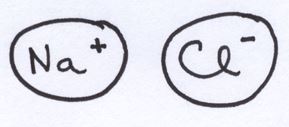Intermolecular interactions
Intermolecular attractions are attractions between one molecule and a neighbouring molecule. The forces of attraction which hold an individual molecule together (for example, the covalent bonds) are known as intramolecular attractions. These two words are so confusingly similar that it is safer to abandon one of them and never use it. The term "intramolecular" won't be used again on this site.
All molecules experience intermolecular attractions, although in some cases those attractions are very weak. Even in a gas like hydrogen, H2, if you slow the molecules down by cooling the gas, the attractions are large enough for the molecules to stick together eventually to form a liquid and then a solid.
In hydrogen's case the attractions are so weak that the molecules have to be cooled to 21 K (-252°C) before the attractions are enough to condense the hydrogen as a liquid. Helium's intermolecular attractions are even weaker - the molecules won't stick together to form a liquid until the temperature drops to 4 K (-269°C).
There are three key ideas behind intermolecular forces:
• Oppositely charged bits of molecules attract each other (while bits of molecules of the same charge repel each other).
• Charges of greater magnitude make for stronger attractive forces.
• Charged bits of molecules exert stronger attractive forces when they’re closer to each other than when they’re far away from each other.
These give rise to some different sorts of intermolecular forces. I’ll run through them and then give you the low-down on how you tell which intermolecular force is the most important one for a particular compound.

